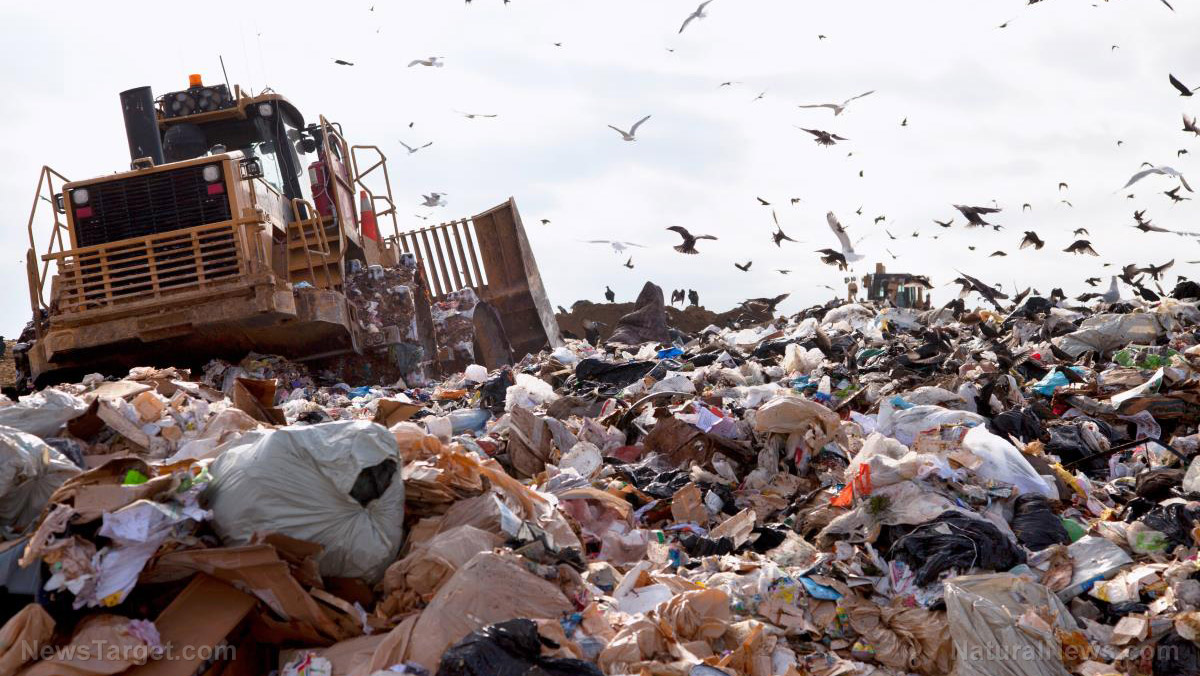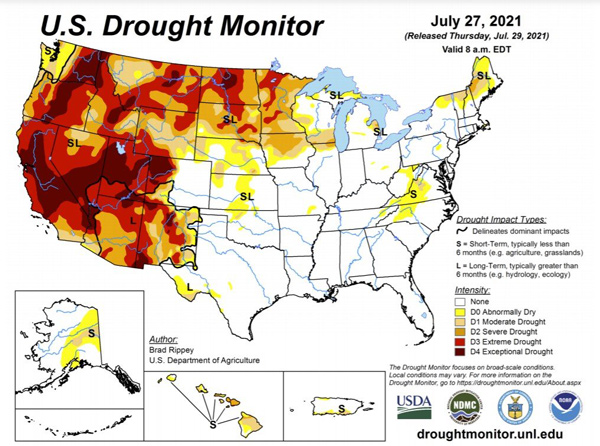Microplastic pollution is escalating around the world – study
05/10/2021 / By Nolan Barton

A new study of airborne plastic particles finds that microplastic pollution is escalating around the world. Tiny remains of plastic are more ubiquitous than science had known, according to researchers from Cornell University and Utah State University who teamed up for the study.
The research findings were published on Monday, April 12, in the Proceedings of the National Academy of Science. The researchers examined airborne microplastics, which have been far less studied than plastic in oceans and rivers.
Researchers said human pollution has led to a global plastic cycle similar to natural processes such as the carbon cycle with plastic moving through the atmosphere, oceans and land. The result is the “plastification” of the planet, said one scientist.
Lead author Janice Brahney, assistant professor of natural resources at Utah State University, and Natalie Mahowald, an engineering professor at Cornell, have found that plastics cycle through the oceans and roadways. If tiny enough, they can become microplastic aerosols, which ride the jet stream across continents.
Plastic pollution: One of this century’s most pressing environmental problems
The analysis of their study calls plastic pollution one of the most pressing environmental issues of the 21st century. It indicates that the billions of tons of plastic discarded into the oceans and on land are being broken down into tiny pieces that are being thrown back into the air by road traffic and winds. (Related: Will plastic pollution end the world? Experts say it’s possible.)

“We found a lot of legacy plastic pollution everywhere we looked; it travels in the atmosphere and it deposits all over the world,” Brahney said. “This plastic is not new from this year. It’s from what we’ve already dumped into the environment over several decades.”
People are already known to breathe, drink and eat microplastics and other studies suggest levels of pollution will continue to rise rapidly. The researchers said this “raises questions on the impact of accumulating plastics in the atmosphere on human health.” The inhalation of particles can be irritating to lung tissue and lead to serious diseases.
“What we’re seeing right now is the accumulation of mismanaged plastics just going up. Some people think it’s going to increase by tenfold per decade,” Mahowald said. “But maybe we could solve this before it becomes a huge problem, if we manage our plastics better, before they accumulate in the environment and swirl around everywhere.”
She said clearing up ocean plastics could help reduce the amount that gets thrown back up into the atmosphere, and that more biodegradable plastics could be part of the solution.
The team collected more than 300 samples of airborne microplastics from 11 sites across the western U.S. from December 2017 to January 2019 – the best dataset available globally. Those samples became the basis for atmospheric modeling that estimated the contribution from different sources, the first such study to do so.
Virtually none of the airborne microplastics came directly from plastics discarded in cities and towns. They were the result of road traffic and winds across oceans and farmland. About 84 percent of microscopic shards came from road dust, 11 percent entered the atmosphere from sea spray and the remaining 5 percent came from agricultural soil dust.
“We thought population centers would be a much better source, obviously, but it just didn’t work out that way,” Mahowald said. “Resuspension of microplastics makes the most sense with this set of data.”
When the researchers expanded their modeling work to a global level, they found that roads are also likely to be the dominant driver of airborne plastics in Europe, South America and Australia while plastic particles blown up from fields may be a much bigger factor in Africa and Asia.
The modeling showed that smaller microplastics can remain in the atmosphere for a week, long enough to be blown across continents. Researchers said the lack of observations in many parts of the world meant there were significant uncertainties in their estimates. Their work particularly shows a lack of data on plastics in the air above the oceans.
“Plastification” of the landscape and oceans
“What humans have been doing for decades now is what I call a ‘plastification’ of the landscape and oceans,” said Prof. Andreas Stohl of the University of Vienna’s Faculty of Earth Sciences, who was not part of the study.
“The study confirms the global-scale nature of microplastic transport in the atmosphere and does a good job in highlighting highly relevant and concerning possibilities, but more measurement data is needed to get a better idea of the sources.”
Stohl said people should be concerned about airborne microplastics “firstly because people will inhale them and it is very likely that will have some health impacts; and secondly, because the atmosphere is a great distributor.”
“The atmosphere transports plastic particles to regions where we definitely don’t want to have them like agricultural fields, national parks, oceans, the Arctic, even Antarctica. Eventually, we will have extremely high concentrations of plastics everywhere,” Stohl said.
To emphasize Stohl’s first point, microplastic particles were found in the placentas of unborn babies in December last year. The health impact of microplastics in the body is not yet unknown, but researchers said it was “a matter of great concern.”
Scientists said microplastics could carry chemicals that might cause long-term damage or upset the fetus’s developing immune system. The particles were likely consumed or breathed in by the mothers.
Meanwhile, the microplastics discovered in the snow close to the peak of Mount Everest, the world’s highest mountain, and plastic debris revealed at the Mariana Trench, the deepest point on Earth, underlined Stohl’s second point. (Related: Microplastic pollution found near summit of Mount Everest.)
Follow Pollution.news to find out more about microplastic pollution.
Sources include:
Submit a correction >>
Tagged Under:
airborne microplastics, atmospheric modeling, environmental problems, immune system, Mariana Trench, microplastics, Mount Everest, ocean plastics
This article may contain statements that reflect the opinion of the author





















